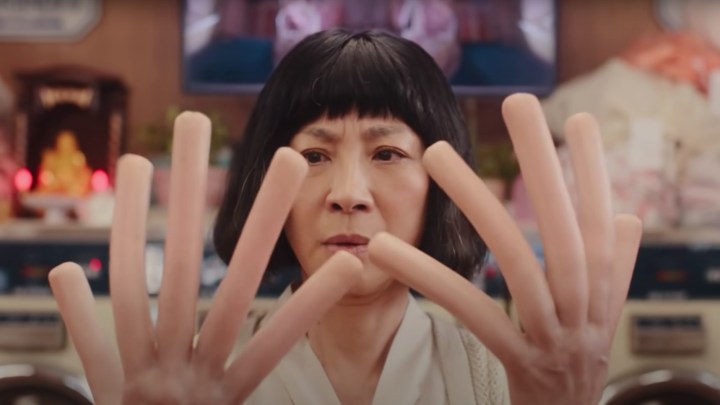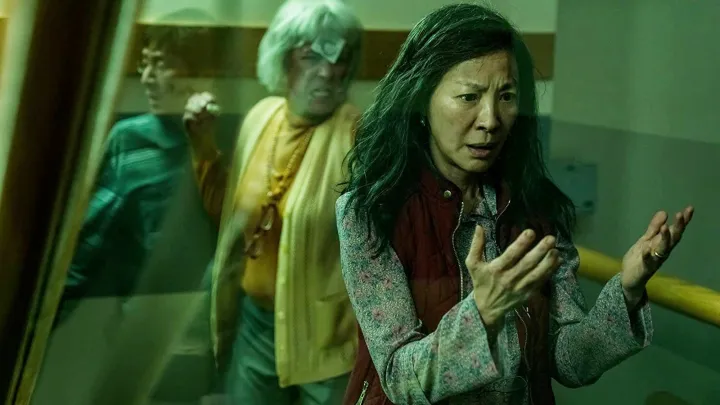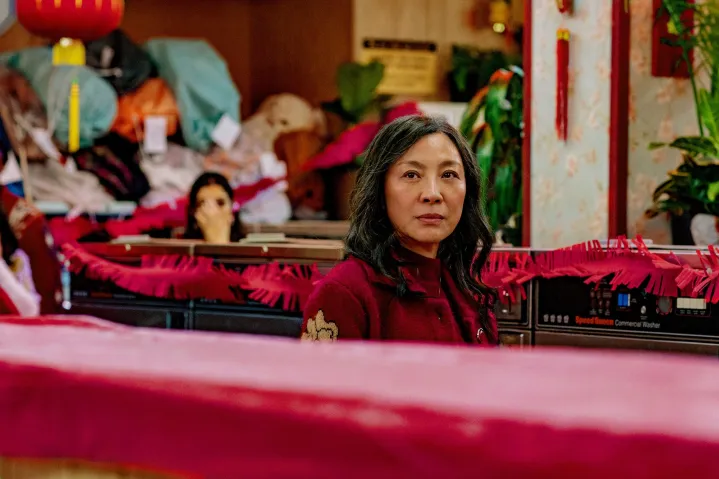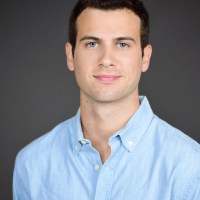The feel-good movie of 2022 belongs to the cast and crew of Everything Everywhere All at Once. The absurdist multiverse story combines sci-fi, drama, martial arts, and fantasy to depict a heartwarming story of love and trauma. Michelle Yeoh stars as Evelyn Quan Wang, an unhappy laundromat owner seeking a better life for herself. While audited by the IRS, Evelyn learns about the multiverse and must inherit multiple versions of herself to save it from destruction.
The high-octane adventure instantly became a crowd pleaser on its way to becoming A24’s highest-grossing film. Directed by Daniel Kwan and Daniel Scheinert, known professionally as “The Daniels,” Everything Everywhere All at Once received universal acclaim for its originality, direction, and stunning visuals. Cinematographer Larkin Seiple helped craft the beautiful use of color in the various universes and the excellent fight sequences throughout the film.
In an interview with Digital Trends, Seiple explains the challenge of shooting in under 40 days, the ingenuity of the Daniels, and the positive impact the film continues to make on the audience.

Note: This interview has been condensed and edited for length and clarity.
Digital Trends: Which was the easier concept to understand? An epic multiverse story or a buddy movie that features a farting corpse?
Larkin Seiple: The corpse one was easier. The corpse one I related to a lot more. A mid-something adult is lost and trying to come to terms with what to do. I’m not a man. I’m not a child. What do I do in the middle ground? Bizarrely, that made sense. As a boy doing dumb stuff with your friends in the woods, it felt very relatable.
The story of generational love and trauma in Everything Everywhere was pretty heady. Trying to follow that emotionally in the script was also a little different than [what] you see in the film. The Daniels were really successful. If you’re confused, it doesn’t matter because you know what emotion to feel. In the script, it was the opposite. You knew what was happening, but it was a little harder to track the emotion of it.
Was there a moment when you finally understood the concept? Did it take a couple of read-throughs to finally say, “Okay, I see what the Daniels are trying to do here?”
The first time I read it so fast because I was so excited. A lot of the confusion was my fault. Like when you read a book that you love or there’s something juicy in it, and you just start looking for keywords. Then you have to go back and reread it. I got it off the bat. I had spent the year with them pitching me verse-jumping and how that was going to work, what we could do with that visual, and what were some really dumb ideas that we can play with that could make someone verse jump.
I think the first reference they had was using a cat as a nunchuck. That was the first image they told me about. They’re like, “There’s a universe, and you have to escape a room, and the only way to do it is to use that cat like a nunchuck.” And I was like, “Okay, that’s an interesting image in my head.” They never used it, and I don’t think it even made the script, but that was like the very first time we talked about it. The absurdity of what was possible out there was a big part of it.
Had you not worked with the Daniels before, do you think you would have been able to pull this off in under 40 days?
No. I think a big part of what made this possible was the fact that not just me and the Daniels, but Jason, our production designer, our whole camera team, and lighting team, had all worked with them for a long time. And Jonathan Wang, their producer. We knew what they would ask for. They would ask for some crazy stuff, but they would also only ask for so much of it. We had this crazy shot, but it’s one shot. It’s not like we need to build the whole road. We need to make one angle work.
They [the Daniels] really lean on their collaborators. They trust [the crew]. “Here’s a crazy idea we have. What’s the best way to execute it,” or ask Jason, “What’s the best place to shoot it,” or “What’s the best option for our budget?” That was constantly the theme. How can we pull this off with the time and money that we have?
All the universes feel different through the use of colors. Why did you use colors to differentiate each universe? Were there other ideas in the mix?
Well, we changed the lensing between all the universes as well. We used six or seven different types of lenses. We also changed aspect ratios from 4:3 to CinemaScope to 1.85 to something as silly as Netflix’s 2:1. which looks just like 1.85. We did things like that. We had a big meeting in the very beginning with me and production design, but also like hair and makeup and costumes. The Daniels were like, “The second act is psychotic, and we are going to be flashing through these universes and we need to make bold choices so you can very easily know where you were.”

We started reserving colors for universes but also choosing not to include some colors in certain universes. We were also playing off the contrasts like the hot dog fingers universe, which no one catches. Everyone’s distracted by the hot dog hands, but the only colors in that universe are ketchup, mustard, flesh, and bun. It’s just those colors.
Wow.
[Laughs] The production designer had a ball. He was most excited about that [hot dog hands] universe. Yeah, it was small things like that. In the Mood for Love was a big reference for the Hong Kong verse where she [Evelyn] is a movie star. In the Mood for Love is not really a green movie. It’s very clean, actually. But we responded to the idea of Wong Kar-wai’s work, which a lot of them like Fallen Angels and Chungking Express were very green and had a lot of flavor to them.
We started just making these bigger and bolder choices. Raccacoonie is a bizarre ode to Punch-Drunk Love. You know, red, white and blue. There are very strong, visceral American colors. We just started having fun with it and then just seeing what was there and enhancing it.
Do you have a favorite reference from a film that you were able to sneak in?
I always have some references that I mention to the Daniels as a joke but are still very much a real reference to me. For Jobu’s universe in the white temple, all of my favorite movies come from the childhood trauma of films. Movies that hit really hard like Jurassic Park. It scared the crap out of me. In The NeverEnding Story, there’s a princess in this weird, icy, white, bright castle. In the second one, there’s this weird crystal palace that falls apart. When I was a kid, it always disturbed me, this weird, fragile, creepy environment.
I combined that with images from Beyond the Black Rainbow, which is this trippy, dark horror film. That was my favorite reference. I even watched NeverEnding Story II, which is terrible and really cheaply made and it ruined my memories of it completely. It does not look anywhere near as good as my memories, and it looks really cheap.
I even think they switched one of the races of the actors, bizarrely enough. A lot of the references are based on memories of these movies as opposed to actually pulling up frames and referencing them themselves. That’s kind of where we went from it. Kind of shooting from the heart, if you will.
The fight scenes are very intricately choreographed. Logistically, they have to be tough to film. How did you figure out where to put the cameras for the fight scenes?
We got really lucky in that the Daniels reached out to our choreographers, the Le brothers, and their team. Those guys love Jackie Chan films, and we love Jackie Chan films. I grew up on Jackie Chan films and all of his classic films like the ladder fight in First Strike. The Daniels connected with them so they started working with them [the Le brothers] to choreograph. They really choreographed with the camera as well so we got to start breaking it down and figuring out far in advance how we could execute it and how to simplify it.
A lot of it was giving yourself the right amount of time. The fanny pack fight was multiple cameras, and we’d have these really weird rigs we built in advance like the camera on the ground that’s like the POV of the fanny pack wrapping around this foot. It was a little roller skate rig that I just ran with on the end of a rope.

Then you have the stairs fight, and that was the most painful thing to make. You have 20 people on the staircase. You’re trying to move around. We had to spend a bunch of money on these fancy techno cranes, not to do any cool moves, but to put a camera in a place that was hard to get to. We had to spend all this money to put a camera in an obnoxious place to tell the story. We slowly worked with it.
With those scenes, not only are you trying to do an action scene, but you have industrial fans blowing paper everywhere. The lighting is flickering. It was a big challenge. We would actually hustle through dialogue and try to do heavy dialogue days so that we could have time to actually capture the chaos appropriately. We wouldn’t have to rush through the action scenes as much as we thought we had to.
Have you been able to take a step back and realize what this movie has meant to a lot of people? It’s grossed over $100 million worldwide, which is an A24 record, and it has a strong chance of getting nominated for some Oscars. Is this surreal? Did you know that you had something special?
I remember a couple of crew members being like, “I think you guys made something special,” and at the time, not really giving that too much thought. I was just happy that we finished. It was such an endurance contest because every day, you’re coming in at 100. There’s no chill day on the shoot. [Laughs] Every day has a crazy idea or something we had to pull off. It started to trickle in slowly. Our colorist, Alex, before he graded the film, he watched it with his wife and he was like, “Yeah. My wife loved the film, and she cried.” There are not even final visual effects in it. I was like, “Oh, wow. That’s crazy.”
But I’ve also been there during the editing process because they kept playing with it and getting all these crazy responses. It really only dawned on us at South by Southwest. Hearing the first crowd reaction, I was like, “Oh. I get it.” Hearing people crying in theaters is something I hadn’t really experienced. Usually, crying is a quiet thing, and the person next to me was sobbing, and I started getting really emotional. I’ve never had an emotional response to any of my projects before because usually, it’s been beaten out of you by the time you see it in the cinema. I actually had a real response to seeing it.

I’m just so proud of the Daniels for what they’ve done. Even at night after South by Southwest, they had a big party at their house with just the crew. It was a dance party. Someone started making everyone give speeches. Half the people couldn’t get into a speech because the whole room would get quiet. They’d go to talk, and they would just start getting weepy and be like, “I can’t do it.”
It sounds cliché, but the people really worked on this for so long. It was all them. It wasn’t like it was a great script that we found and someone did it. No, it’s all these guys kind of putting everything they have into it. I’m very happy to see the world respond.
Everything Everywhere All at Once is available to rent on services like Prime Video, Apple TV, and YouTube.
Editors' Recommendations
- Which multiverse is better: Marvel or DC?
- The cast of There’s Something Wrong with the Children on what makes a good horror movie
- Reginald the Vampire cast on celebrating the underdog in a feel-good comedy
- Mark Ellis on summer 2022 movies, Top Gun: Maverick’s success, and the state of comic book films
- Please, don’t let adult cinema die




